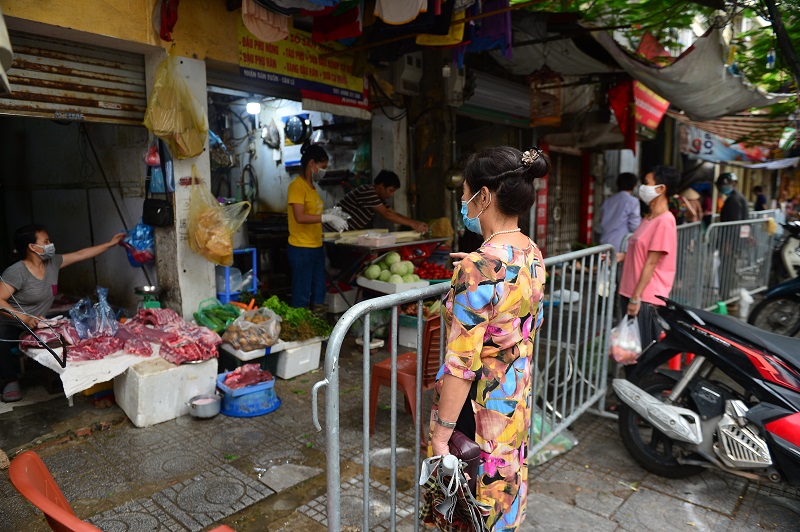What risks will Vietnam address amid COVID-19?
The short- to medium-term outlook for Vietnamese economy is subject to several downside risks, said WB.

Lower household income would in turn affect consumption and investment decisions, and by extension, economic recovery. Photo: Quoc Tuan
Vietnam’s short- to medium-term economic prospects will depend on several factors: (i) the pace of national vaccinations; (ii) the evolution of the pandemic, and thus resumption of economic activities in countries that compete with Vietnam in export markets; and (iii) weaker-than-expected growth especially in Vietnam's key export markets could weigh on the recovery. The recovery in the United States, the European Union, and China would be underway but fragile. “If one or more of these risks were to materialize, exports and domestic demand would not rebound as expected. The economy could still grow by 3.2 percent in 2021 and 5.5 percent in 2022 (low case scenario). Inflation will remain subdued, but the country’s fiscal and external balances will not improve as projected in the baseline scenario from 2021 onward”, WB forecasted.
In WB’s view, the lingering crisis has highlighted more structural domestic challenges and needed government responses, such as the ones that follow.
Address social consequences of the crisis
The impact of COVID-19 on the labor market and households has continued into 2021, exacerbated by the February and April outbreaks. Labor participation has not fully recovered to the pre-COVID-19 period, and household incomes have been affected, with variations across sector, gender, and geography. These effects are especially relevant to women, who have been more penalized by the recent adjustments in the labor markets. Also, those in the informal sectors and regions where the economy is dependent on international tourism and business have been more affected. Such disparate effects can lead to lasting increases in inequality.
Lower household income would in turn affect consumption and investment decisions, and by extension, economic recovery. Lower income may also impact investment in children’s education and health, which would have long-term effects on the country’s human capital formation. The authorities should consider strengthening the coverage, targeting, and benefits levels of the country’s social protection programs to ensure that current and future victims of natural or economic shocks receive adequate support.
Watch for financial sector risks raised by the crisis
Given that recent new outbreaks, and especially the broad-based outbreak that started in May, have led to the precautionary closing of many businesses in major cities and some production zones, the monetary authorities will need to be vigilant about the rising risks associated with nonperforming loans. They should continue to closely monitor the stability of the banking sector, which still has undercapitalized banks. A robust early warning system should be developed to identify potential threats to individual banks and the overall system.
The authorities should establish a clear exit strategy for loan forbearance measures. The implementation of the forbearance measures, which could mask the full extent of vulnerability of the borrowers and the banks, must be closely monitored. It would be useful to adopt early on a resolution plan for non-performing loans, thus not allowing the burden of bad loans to linger in the banking system as it could stifle the sector’s role in supporting inclusive growth. Further, there should be a well-defined mechanism for dealing with weak and troubled banks, while recapitalization of banks to meet Basel II requirements should continue.
Watch for fiscal risks
In the baseline scenario, the fiscal deficit is expected to increase from 4.9 percent of GDP in 2021 to 6 percent of GDP in 2021, leading to an increase in public debt of 3.0 percent of GDP. While the government still has sufficient fiscal space, with a debt-to-GDP ratio of around 55.3 percent of GDP as of the end of 2020, international experience has demonstrated that the fiscal situation could deteriorate relatively quickly if the current outbreak is not controlled rapidly or/and new outbreaks materialize in the coming months.
Indeed, fiscal policy might be the only main instrument in the hands of the authorities to cope with the pandemic. The government might be required to expand its fiscal assistance package, which has so far been modest, to support people and businesses, and so avoid possible social tensions. Some industries in financial distress, such as the tourism sector and the aviation industry, have so far been mainly supported by the accommodative monetary policy but might need direct intervention from the state if their situation does not improve.
The further acceleration of the implementation of the public investment program could also contribute to increasing public spending. Tax collection could also be negatively affected by the slowdown in economic activity. At this stage, the fiscal risk appears relatively under control but should continue to be closely monitored.








